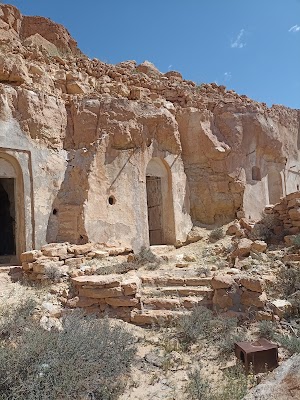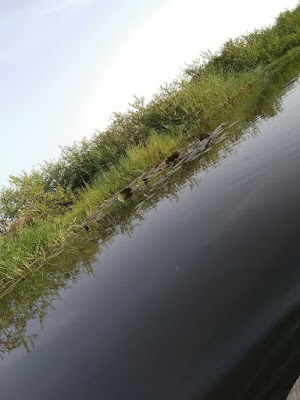Kufra Oasis (واحة الكفرة)
Related Places
Overview
Al Kufrah, also known as Kufra Oasis, is an extraordinary oasis nestled in the heart of the Libyan Desert, within the Kufra District of southeastern Libya. This desert gem has captivated travelers and historians for centuries due to its unique geographic and historical significance.
Geography and Landscape
The oasis comprises several small interconnected oases, with Buma and Atar being the most prominent. The landscape is adorned with swaths of greenery, date palms, lush gardens, and fresh water, offering a striking contrast to the surrounding arid desert. These life-giving features have made Al Kufrah a vital stop for desert nomads and a sanctuary for travelers seeking respite from the harsh conditions of the desert.
Origins and Human Ingenuity
The origins of Kufra Oasis are deeply rooted in both natural processes and human effort. Naturally, the oasis formed due to underground aquifers—ancient reserves of water that surfaced in this arid region. Human ingenuity has played a crucial role in transforming these natural springs into a sustainable habitat. For centuries, the inhabitants developed sophisticated irrigation techniques, including the construction of foggaras, an ancient type of underground water channel that efficiently transports and distributes water to irrigate crops and sustain communities.
Cultural Significance
The story of Al Kufrah is also a saga of cultural intersections. With a long history of human settlement dating back to ancient times, the oasis was a crucial part of the trans-Saharan trade routes, serving as a vital corridor linking Sub-Saharan Africa with North Africa and the Mediterranean coast. Merchants and caravans would stop at Al Kufrah to rest and replenish supplies before continuing their arduous journeys across the desert. This constant flux of traders facilitated a rich cultural exchange that greatly influenced the region's development.
Colonial Era Impact
In the early 20th century, Al Kufrah gained attention during the colonial era. The Italians, who ruled Libya at that time, recognized the strategic importance of the oasis and established a military presence there. They constructed forts and roads to maintain control over this crucial region. Although aimed at dominance, this colonial infrastructure inadvertently enhanced the connectivity and accessibility of Al Kufrah.
Local Communities
The population of Al Kufrah predominantly consists of the Toubou and Arab Bedouins. These indigenous groups have traditionally led a nomadic lifestyle, herding livestock and living in tents. However, they have adapted well to the more settled lifestyle around the oasis. The Toubou, in particular, are renowned for their formidable navigation and survival skills in the desert, which have been passed down through generations and remain essential to their way of life.
Modern Developments and Economy
Modern-day Al Kufrah has witnessed some development, thanks to government initiatives aimed at boosting agriculture and ensuring settlement stability. Efforts to modernize irrigation systems and implement sustainable agricultural practices have emerged. Despite these advancements, the lifestyle in Kufra remains closely tied to traditional practices, and the community has successfully preserved much of its heritage and customs. The local economy revolves around agriculture, with date palms being the most significant crop. Dates from Al Kufrah are known for their exceptional quality and play a substantial role in local trade. Additionally, handicrafts and traditional weaving continue to be important cultural and economic activities.
Challenges and Resilience
While Al Kufrah remains relatively isolated, its historical significance and the stark beauty of its desert scenery make it a place of intrigue and wonder. The oasis not only serves as a testament to human resilience and ingenuity but also stands as a vibrant cultural hub in one of the most unforgiving environments on Earth. However, the future of Al Kufrah is challenged by environmental and political factors, including desertification and regional instability. Despite these challenges, the people of Kufra continue to rely on their rich heritage, community strength, and innovative spirit to adapt and thrive, securing a lasting legacy for this legendary desert oasis.





